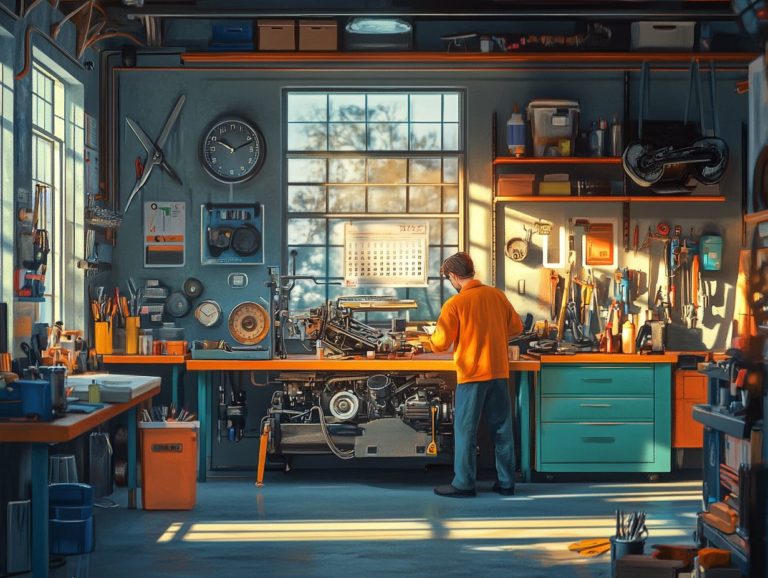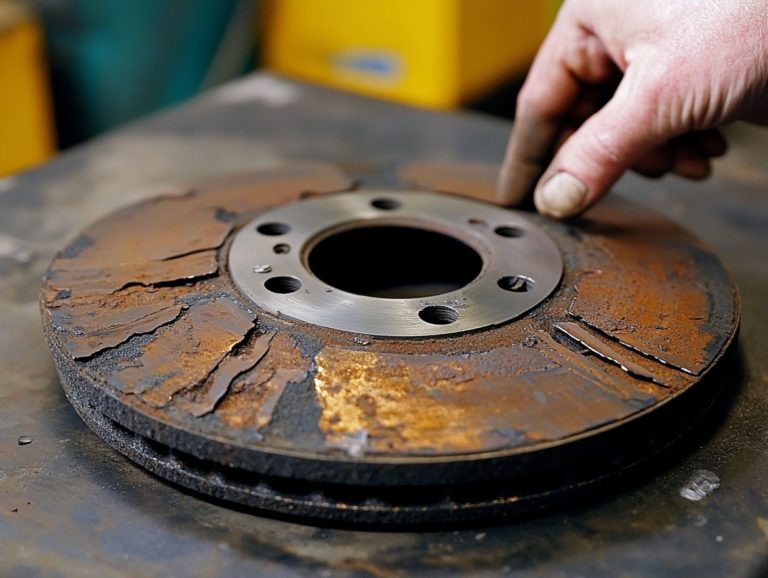How to Spot and Fix Small Dents
Small dents can truly be an eyesore on your vehicle, but recognizing and addressing them doesn t have to feel overwhelming. This guide explains the different types of dents and their causes, equipping you with the essential tools and materials for effective repair.
It walks you through a detailed, step-by-step process for tackling those pesky imperfections, shares alternative methods for dent removal, and offers valuable tips to prevent future damage. Prepare to restore your vehicle s pristine appearance!
Contents
Key Takeaways:
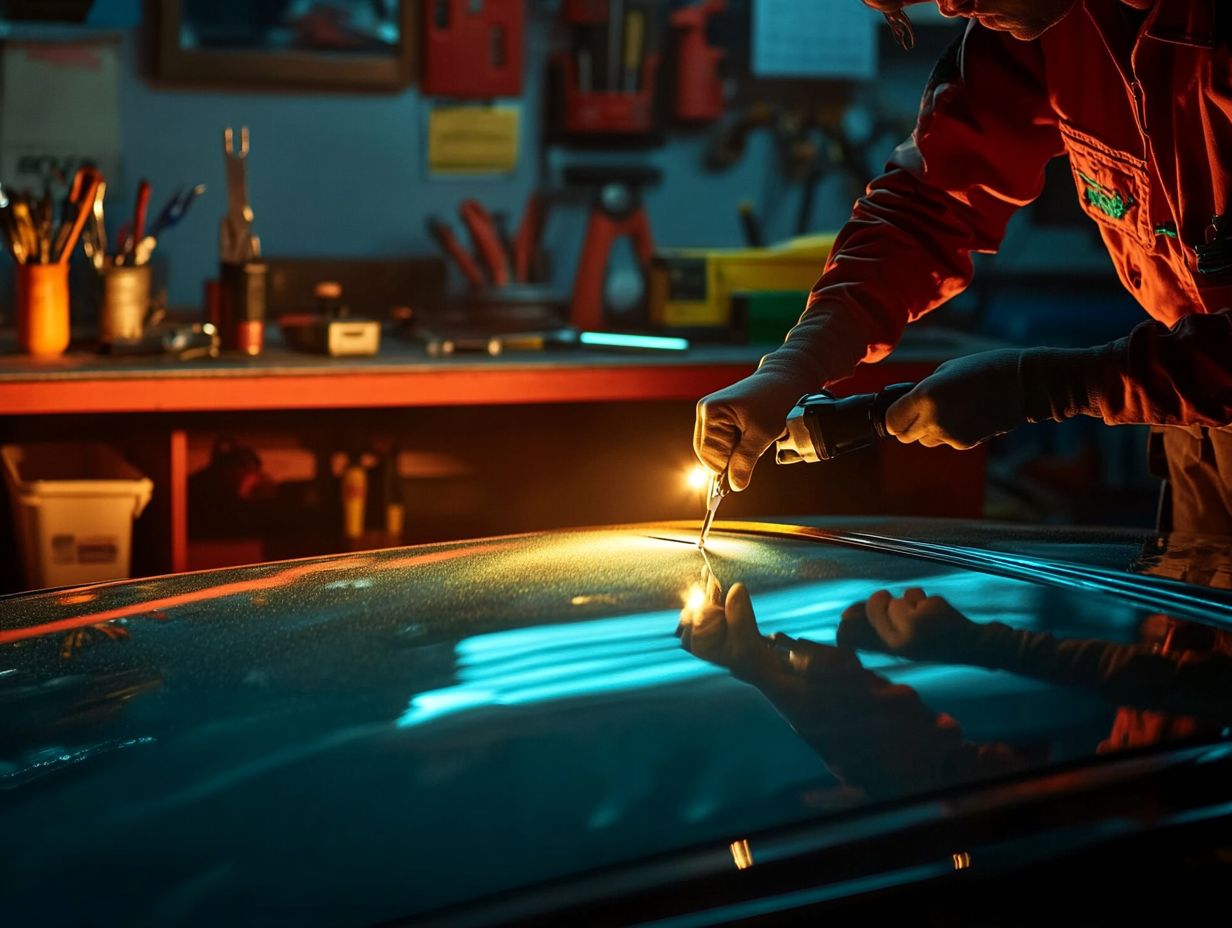
- Identify the type and cause of the dent before attempting to fix it. Different dents require different repair methods.
- Gather the necessary tools and materials for a successful repair, including essential equipment and supplies.
- Follow a step-by-step process and consider alternative methods to remove small dents. Determine if DIY or professional help is best for your situation.
Identifying Small Dents
Identifying small dents on your vehicle is crucial for maintaining its overall health. This enables you to tackle issues before they escalate into more serious concerns. These minor imperfections can stem from a range of sources, including minor accidents or the effects of weather. They can impact both the aesthetics and the strength and safety of your car’s body panels.
By understanding the denting process and the various types of dents, you can make informed decisions about the best repair options available to you whether that means opting for professional services or taking on a DIY approach.
Different Types of Dents and Their Causes
You ll encounter various types of car dents, ranging from minor imperfections to deep divots. Each arises from different scenarios such as fender benders or unforeseen collisions with objects like shopping carts.
Minor dents, characterized by their shallow, rounded impressions, are often manageable through simple techniques and might not necessitate professional intervention. Deeper divots can compromise your bumper s integrity, potentially leading to structural concerns.
When accidents occur, the resulting dents vary dramatically based on the impact’s force and the angle at which your vehicle was struck. For instance, a sideswipe might leave long, shallow scratches along your vehicle’s side, while a rear-end collision could create a pronounced crumple in the bumper area. These examples highlight the diverse effects that different types of impacts can have on a vehicle s surface.
Tools and Materials Needed for Repair
Having the right tools and materials is essential for effective dent repair, whether you decide to enlist professional services or take the DIY route.
Key equipment might include dent pullers, body fillers, and specialized dent kits specifically crafted to help you eliminate small dents and restore that flawless finish to your vehicle’s surface. Understanding which tools you need can greatly impact both the costs and results of your dent removal endeavors.
Essential Equipment and Supplies
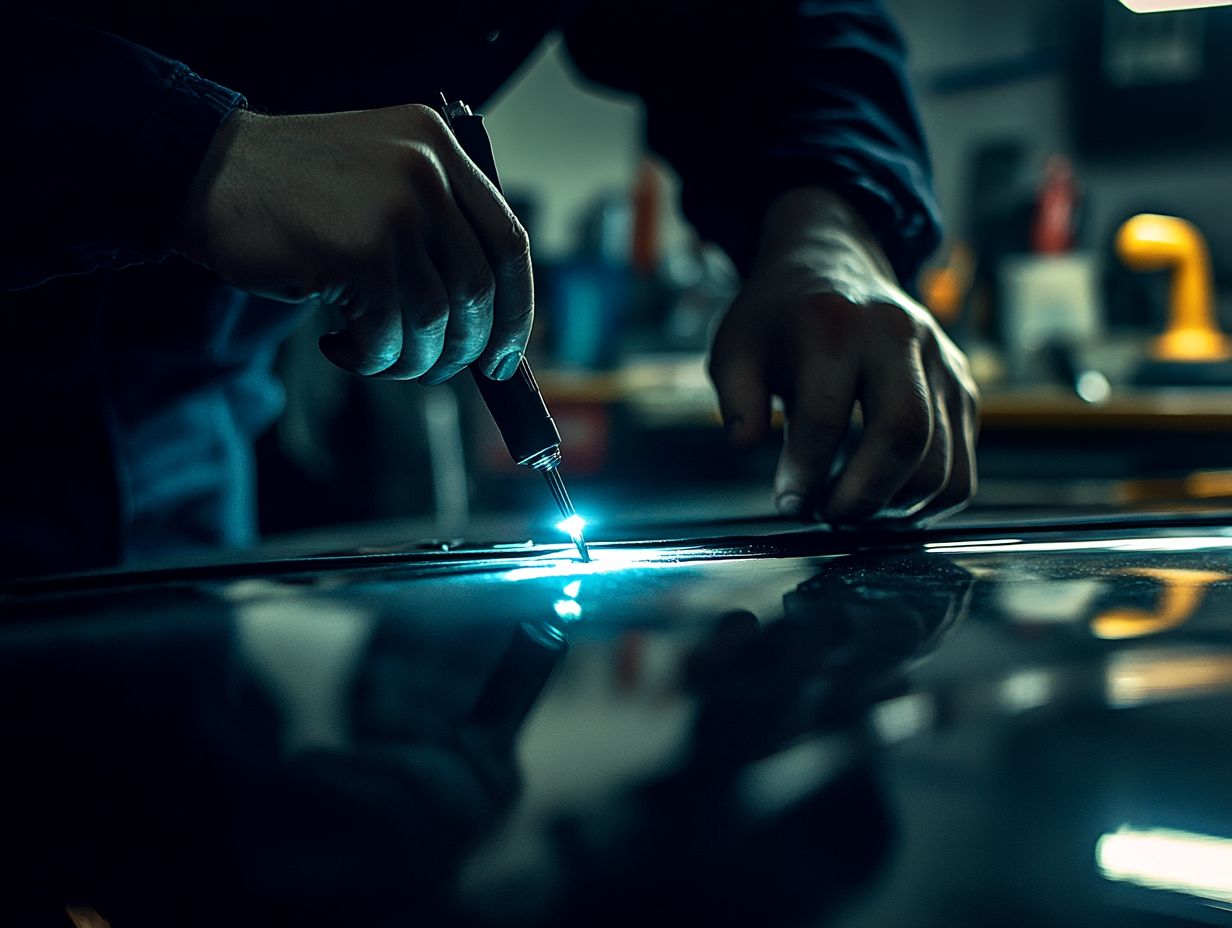
To successfully execute dent removal techniques, you must have the essential equipment and supplies on hand. This ranges from a dent puller for minor dents to body filler for those deeper damages that require a little extra attention.
Your choice of tools can significantly influence the quality of your workmanship. For instance, a hot glue gun is invaluable for attaching pulling tabs to tackle smaller imperfections, while a slide hammer might be necessary for larger dings. Don’t overlook sandpaper and polishing compounds they’re crucial for achieving that flawless finish once repairs are complete.
The importance of using the right tools cannot be overstated. They not only enhance the effectiveness of dent removal but also ensure that the vehicle’s surface is restored to its original glory, preserving its value and aesthetics.
Ready to restore your car? Let s get started on those dents today!
Step-by-Step Process for Fixing Small Dents
The process of fixing small dents unfolds in a meticulous, step-by-step manner that emphasizes careful preparation and the use of suitable repair techniques. Your goal is to achieve a smooth finish that seamlessly matches the vehicle’s original appearance.
Begin by assessing the dented surface; this initial evaluation is crucial. Whether you choose to apply professional repair methods or explore DIY options, every stage is vital for effective dent removal and for preventing further damage to your vehicle.
Using the right methods can make the repair process easier, reduce costs, and ultimately enhance the quality of the results.
Preparation and Techniques for Repair
Preparation serves as the cornerstone of successful dent repair, ensuring that every necessary step is taken to address safety concerns while achieving effective vehicle restoration.
Before you dive into the dent removal process, it’s essential to assess your vehicle’s overall condition and gather the appropriate tools. Always don personal protective equipment like gloves and safety goggles to shield yourself from debris.
Ensure proper ventilation in your workspace to avoid inhaling harmful fumes, especially when using heat tools for dent removal. Having a clear understanding of various techniques, such as paintless dent repair (a method that doesn’t require repainting), or using hot water to soften the paint, can significantly influence your results.
By taking these safety measures, you not only enhance efficiency but also maintain the integrity of the vehicle and ensure the well-being of everyone involved in the repair process.
Alternative Methods for Dent Removal
Explore various methods now to find the best solution for your dents! It s crucial to consider both DIY options and professional repair services to determine the most suitable approach for your specific situation.
While opting for DIY dent repair can be a cost-effective choice, enlisting a professional often guarantees a comprehensive job, minimizing the risk of paint damage or structural complications.
By carefully evaluating the pros and cons of each approach, you can make informed decisions that align with your budget and repair needs.
Comparing DIY and Professional Solutions
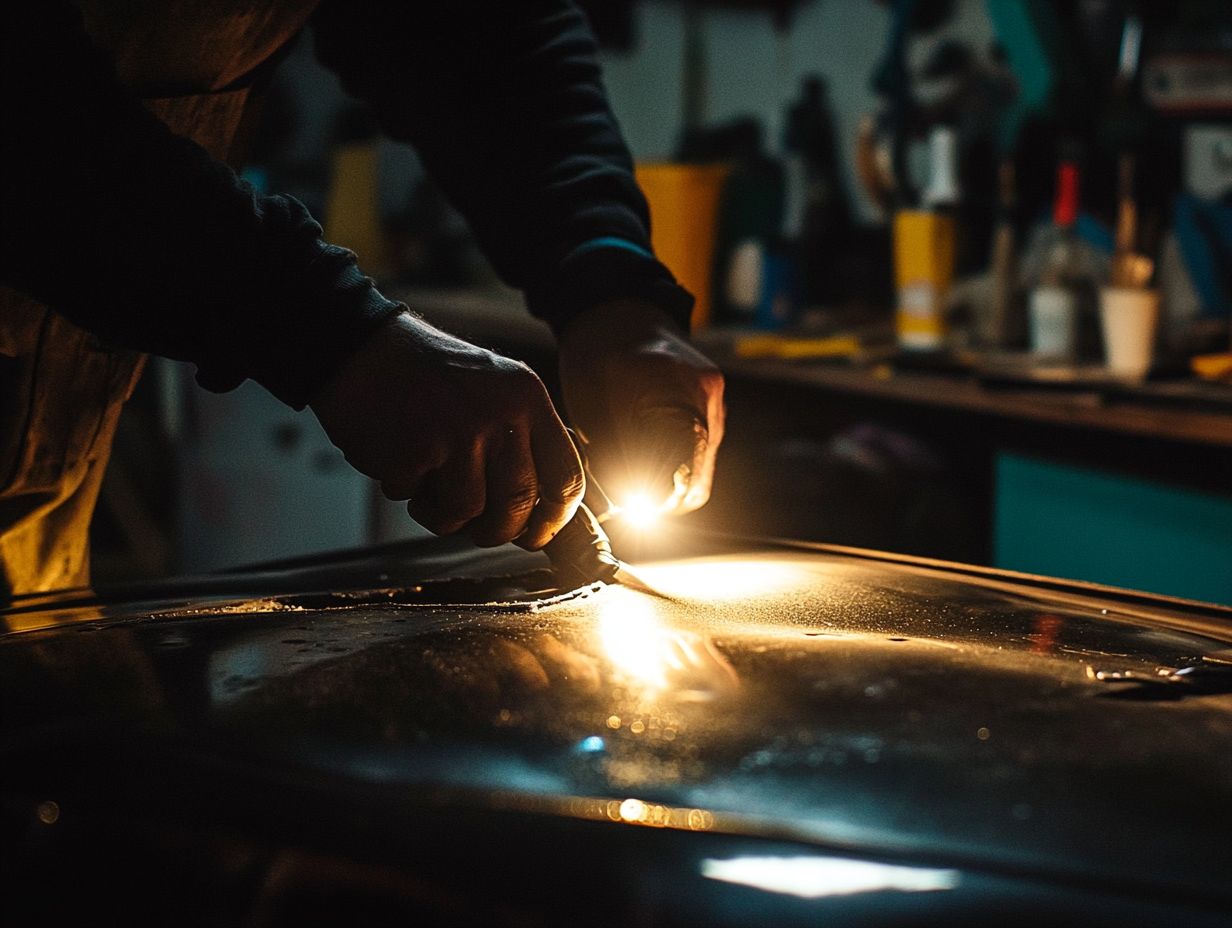
Comparing DIY dent repair with professional repair solutions is essential for determining which approach best suits your needs and budget.
With the rise in popularity of at-home repair kits, you might find yourself intrigued by the prospect of saving money and tackling dents on your own. However, it s crucial to carefully weigh the advantages and disadvantages of both options.
While DIY methods can appear cost-effective at first glance, their success often hinges on the quality of the tools you use and your own skill level. On the other hand, hiring professional dent technicians typically ensures superior results. These experts come equipped with the experience and specialized tools required to deliver high-quality repairs.
Not only can they achieve a seamless finish, but they also help you avoid potential pitfalls, such as damaging your vehicle s paint, which could lead to more expensive repairs later on. By considering the long-term ramifications of your choices, you’ll be empowered to make informed decisions that align with your repair priorities.
Tips for Preventing Small Dents
Preventing small dents demands your proactive attention to car care and the adoption of protective measures that shield your vehicle from potential harm.
Employing straightforward strategies such as parking in designated areas, utilizing protective covers, and remaining aware of your surroundings can greatly diminish the likelihood of minor dents from everyday nuisances like tree branches or shopping carts.
By prioritizing your vehicle’s maintenance, you not only enhance its longevity and appearance but also minimize the repair costs associated with dent damage.
Start your dent repair journey today and restore your vehicle’s beauty!
Protective Measures for Your Vehicle
Implementing protective measures for your vehicle is essential for preventing pesky small dents and damages caused by everyday hazards and unpredictable weather.
By employing smart parking strategies like opting for covered spots or steering clear of tight spaces you can significantly reduce the risk of accidental scrapes and bumps. Investing in a quality vehicle cover adds an extra layer of defense against harsh weather conditions, whether it s the scorching sun or unexpected hail.
Frequent washings and wax applications protect your car’s exterior from environmental damage and rust. Ultimately, these practices preserve your vehicle s aesthetics and value while cultivating a sense of pride in ownership. They ensure it remains a reliable mode of transportation for years to come.
Frequently Asked Questions
What are small dents and how do I spot them?
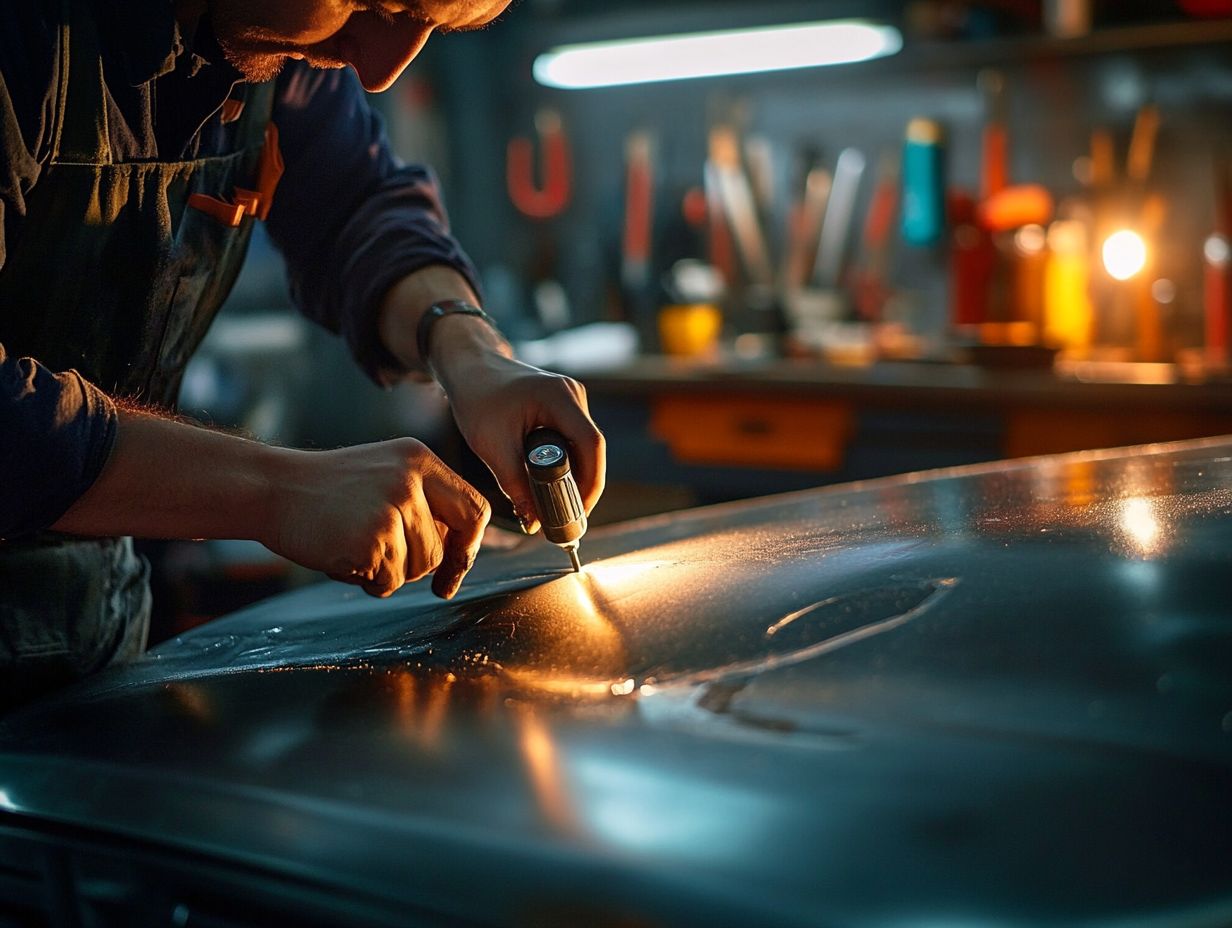
Small dents are small damages to a surface that can be caused by various factors such as hail, car doors, or even shopping carts. You can spot them by carefully examining the affected area and looking for irregularities in the surface, such as bumps or depressions.
Can small dents be fixed without professional help?
Yes, small dents can be fixed without professional help if they are not too severe. With the right tools and techniques, you can easily fix small dents at home. Don’t hesitate to call a pro if the damage is deep!
What are some tools I can use to fix small dents?
You can fix small dents using simple tools like a plunger, hair dryer, heat gun, suction cup, and dent puller. These tools are easily available and can be used on different surfaces, such as car doors, bumpers, or metal objects.
How do I fix a small dent using a plunger?
To fix a small dent using a plunger, wet the suction pad with water and place it over the dent. Push and pull the plunger to create suction, which will help pull out the dent. This method works best on flat surfaces.
Can I use hot water to fix a small dent?
Yes, hot water can be used to fix small dents on plastic surfaces such as bumpers. Pour hot water over the dent and then use a plunger to create suction and pull out the dent. This method may not work on metal surfaces.
What should I do if the small dent is too deep to fix at home?
If the small dent is too deep or extensive, it is best to seek professional help. A professional will have the necessary tools and expertise to fix the dent without causing any further damage to the surface. It may cost more, but it will ensure a proper and long-lasting fix.


